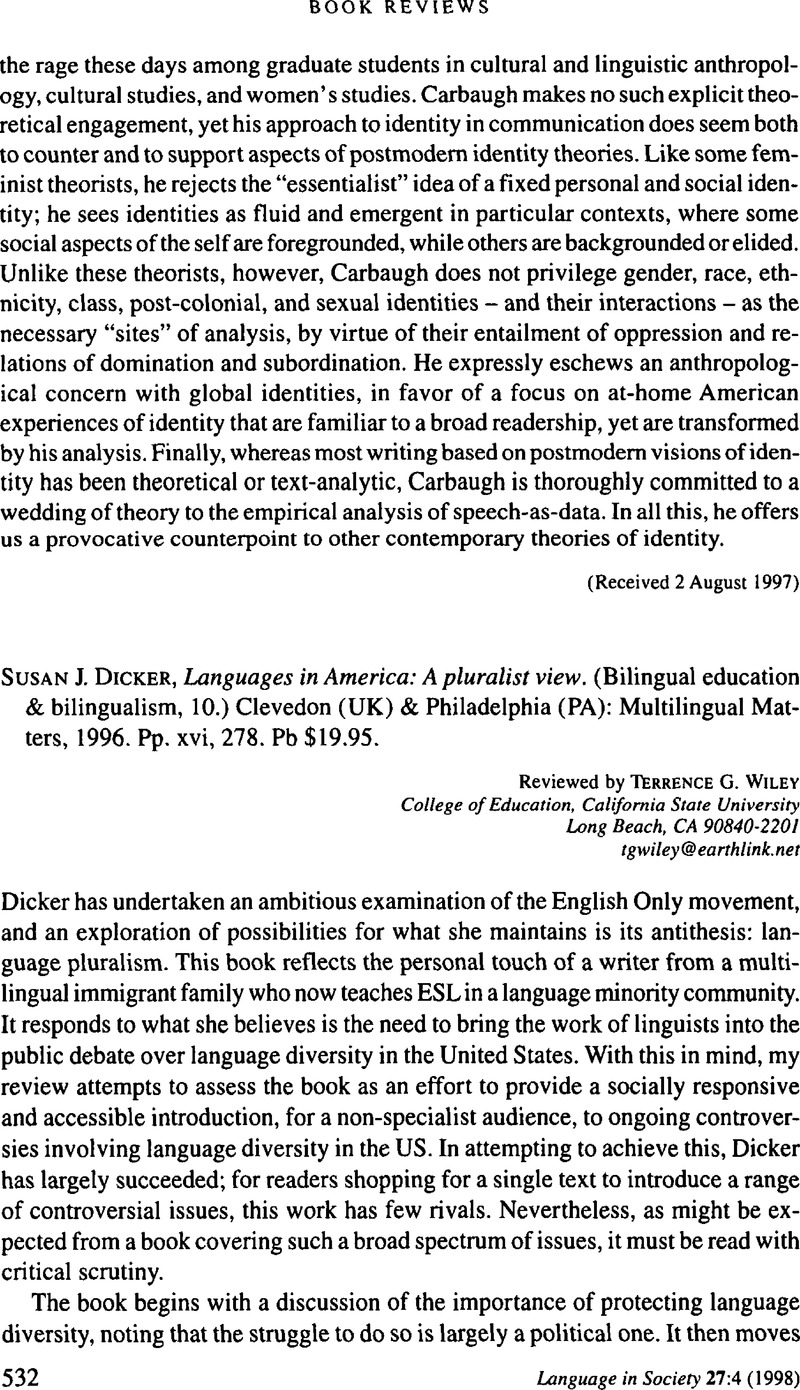Cummins, Jim (
1994). The discoourse of disinfirmation: The debate on bilingual education and language rights in the United States. In
Skutnabb-Kangas, Tove &
Phillipson, Robert (eds.),
Linguistic human rights: Overcoming linguistic discrmination,
159–77.
Berlin:
Mouton de Gruyter.
Google Scholar 